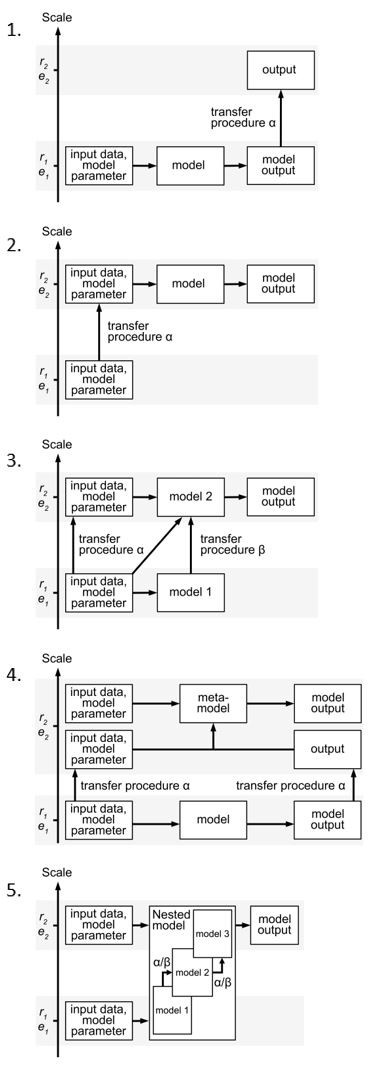Abstract
Sustainability challenges in socio-environmental systems (SES) are inherently multiscale, with global-level changes emerging from socio-environmental processes that operate across different spatial, temporal, and organisational scales. Models of SES therefore need to incorporate multiple scales, which requires sound methodologies for transferring information between scales. Due to the increasing global connectivity of SES, upscaling – increasing the extent or decreasing the resolution of a modelling study – is becoming progressively more important. However, upscaling in SES models has received less attention than in other fields (e.g., ecology or hydrology) and therefore remains a pressing challenge. To advance the understanding of upscaling in SES, we take three steps. First, we review existing upscaling approaches in SES as well as other disciplines. Second, we identify four main challenges that are particularly relevant to upscaling in SES: 1) heterogeneity, 2) interactions, 3) learning and adaptation, and 4) emergent phenomena. Third, we present an approach that facilitates the transfer of existing upscaling methods to SES, using two good practice examples from ecology. To describe and compare these methods, we propose a scheme of five general upscaling strategies. This scheme builds upon and unifies existing schemes and provides a standardised way to classify and represent existing as well as new upscaling methods. We demonstrate how the scheme can help to transparently present upscaling methods and uncover scaling assumptions, as well as to identify limits for the transfer of upscaling methods. We finish by pointing out research avenues on upscaling in SES to address the identified upscaling challenges.

This work is licensed under a Creative Commons Attribution-NonCommercial 4.0 International License.
Copyright (c) 2022 Gunnar Dressler, Jürgen Groeneveld, Jessica Hetzer, Anja Janischewski, Henning Nolzen, Edna Rödig, Nina Schwarz, Franziska Taubert, Jule Thober, Meike Will, Tim Williams, Stephen Björn Wirth, Birgit Müller


